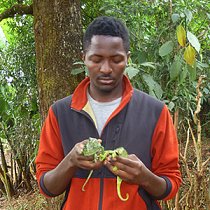
Walter Paulin Tapondjou Nkonmeneck
Influence of the anthropogenic activities on the habitat selection, perch height and feeding ecology of endemic chameleons of the Cameroon Volcanic Line
<p>Cameroon is home to the highest diversity of chameleons in Central Africa, with over 15 species known to date, of which six (06 species and 03 subspecies) from the genus <em>Trioceros</em> Swainson 1839, are endemic to the Cameroon Volcanic Line. The concerned species are the following: <em>Trioceros montium, T. perreti, T. serratus, T. wiedersheimi, T. pfefferi, T. quadricornis quadricornis, T. quadricornis gracilior</em> and <em>T. quadricornis eisentrauti</em>. Around the Cameroon Volcanic line, the rapidly growing human population relies upon natural resources; the consequent activities can often have negative impacts on the surrounding ecosystems, resulting in reduced forest and the unsustainable use of resources. In a large heterogeneous and structurally complex forest ecosystem such as the Cameroon Volcanic line, the protection of endemic chameleon cannot be achieved without a thorough understanding of their ecology and role as components of the ecosystems.</p> <p> This project will help to understand: <br></p> <ul><li> Chameleon feeding habits; <br></li><li>Document anthropogenic influence on the ecology and distribution of endemic chameleon from the volcanic line; <br></li><li>Identify and document area with threats of major importance such as: habitat degradation, fragmentation, pet trade; <br></li><li>Provide recommendations for the conservation and sustainable management of natural resources and endemic species of chameleons.</li></ul>